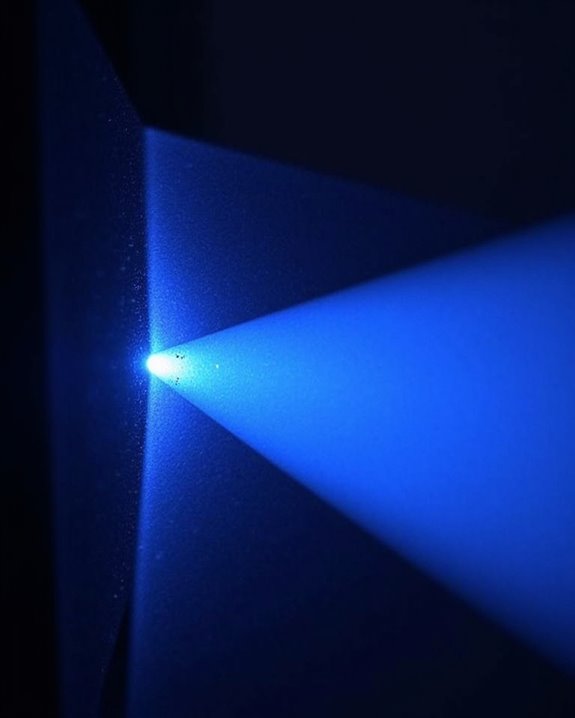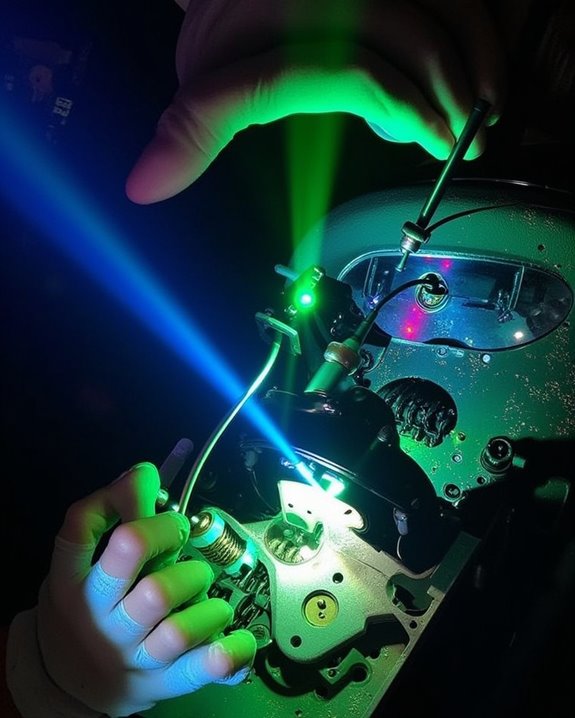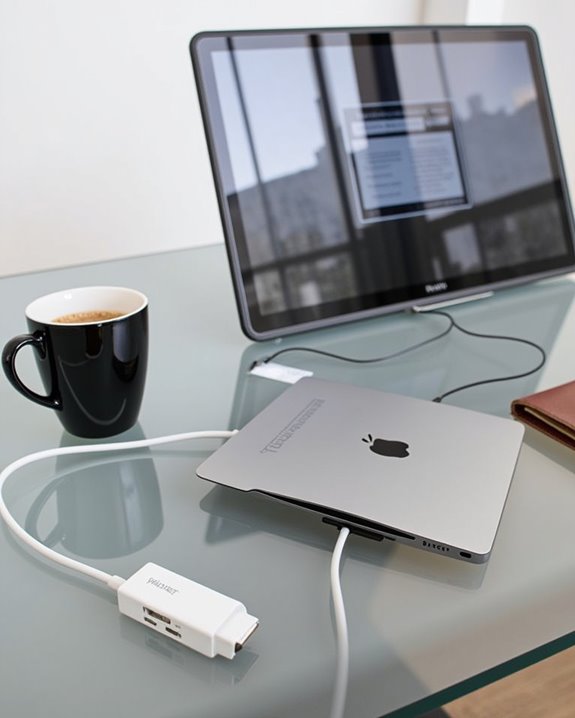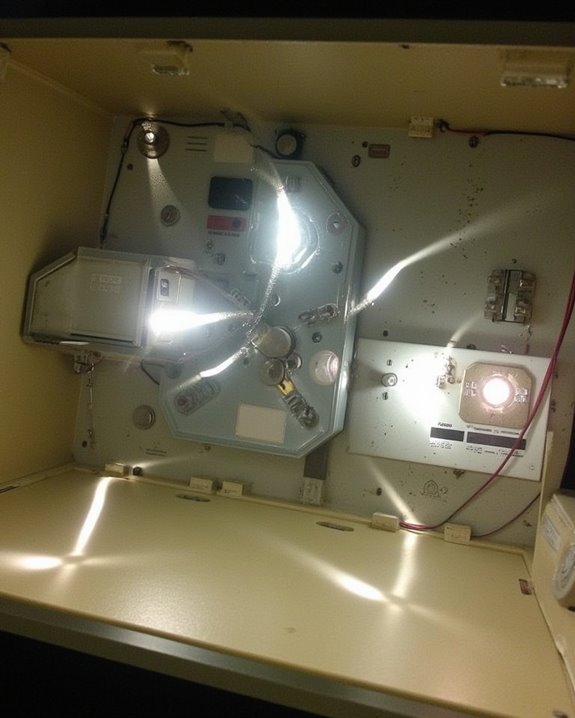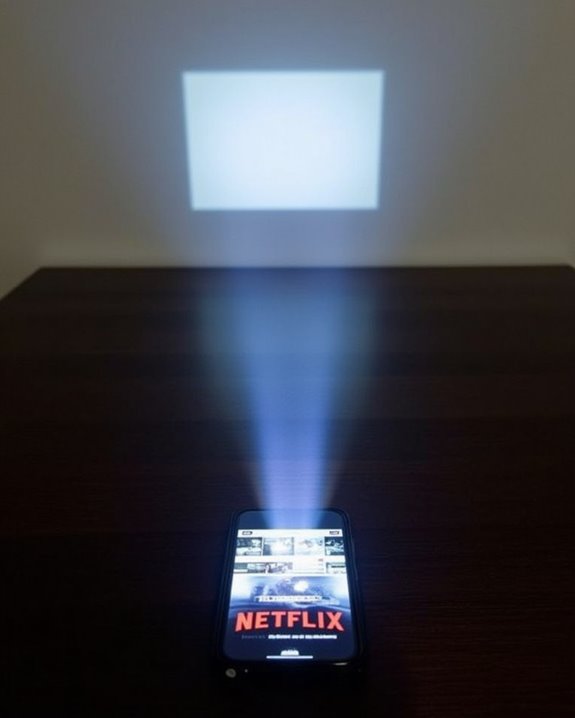You’re considering a laser projector for your home theater or business space, but you’re worried about ambient light washing out your image. An Ambient Light Rejection (ALR) screen might be the solution you’re looking for. These specialized screens are engineered to reflect your projector’s light while simultaneously absorbing unwanted light from windows, lamps, and other sources. The combination of a laser projector’s superior brightness with an ALR screen’s reflection properties creates a viewing experience that maintains vibrant colors and sharp contrast, even in challenging lighting environments. But which type of ALR screen pairs best with laser technology?
Key Takeaways
- ALR screens are highly compatible with laser projectors, enhancing their performance by rejecting ambient light while maximizing projected light.
- Pairing laser projectors with ALR screens creates superior viewing experiences in well-lit environments with better contrast and color accuracy.
- ALR screens can reject over 85% of ambient light, significantly reducing washout and preserving the brightness advantages of laser projection.
- Different ALR screen types (Fresnel, lenticular, Black Series) offer varying benefits for laser projectors depending on room conditions.
- While more expensive than standard screens, ALR screens deliver substantial image quality improvements for laser projectors in rooms with uncontrolled lighting.
Understanding ALR Screens: What They Are and How They Work
When you’re setting up a laser projector in a well-lit room, an Ambient Light Rejecting (ALR) screen becomes your most valuable ally. These specialized screens are engineered with advanced screen material that selectively reflects your projector’s light while absorbing ambient light from other sources, greatly enhancing image quality.
ALR screens function through multiple sophisticated layers, with special coatings that direct projected light toward viewers while trapping unwanted light before it can wash out your image. The surface layers are precisely angled to minimize glare, maintain color accuracy, and preserve deep blacks even in bright environments. Think of them as visual noise-cancelers, filtering out light interference that would otherwise diminish your viewing experience. For ideal performance, proper positioning between your laser projector and the ALR screen is essential, creating an ideal setup for conference rooms, home theaters, or any well-lit space. Additionally, maintaining proper installation and calibration can significantly maximize picture quality and ensure the longevity of your projection system.
The Perfect Match: Why Laser Projectors and ALR Screens Complement Each Other
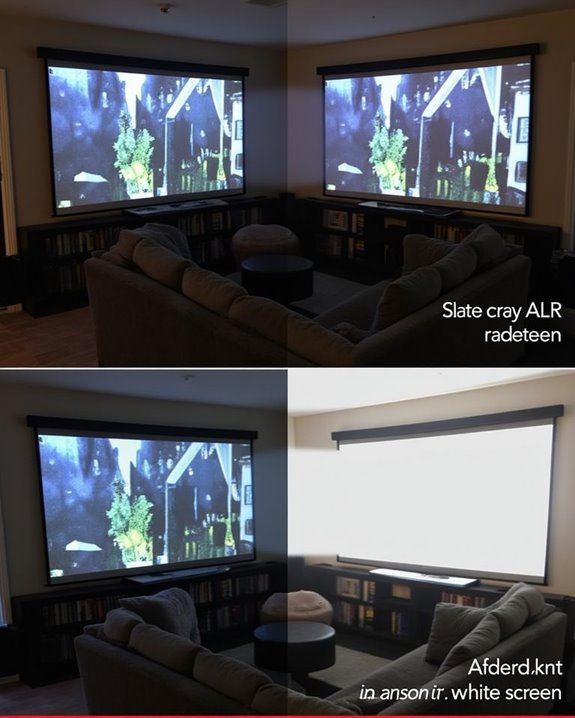
Unlike standard projection setups, laser projectors paired with ALR screens create a synergistic relationship that dramatically enhances your viewing experience in virtually any lighting condition. These screens maximize the inherent advantages of laser technology, preserving the vibrant colors and deep contrast levels even in well-lit rooms, while reducing eye strain during extended viewing sessions.
Regular projector calibration ensures your laser projector’s output matches perfectly with your ALR screen’s capabilities, optimizing HDR content and maintaining wider viewing angles for everyone in the room. Additionally, proper screen cleaning is essential for maintaining the ALR surface’s light-rejecting properties, as dust accumulation can diminish its effectiveness over time. With minimal maintenance, this powerful combination delivers cinema-quality visuals in spaces where traditional projection would fail, making it ideal for both home theaters and professional conference rooms. For optimal brightness in ambient light environments, pairing your laser projector with an ALR screen that reduces ambient reflection by up to 90% is highly recommended.
Setting Up Your ALR Screen for Optimal Laser Projection
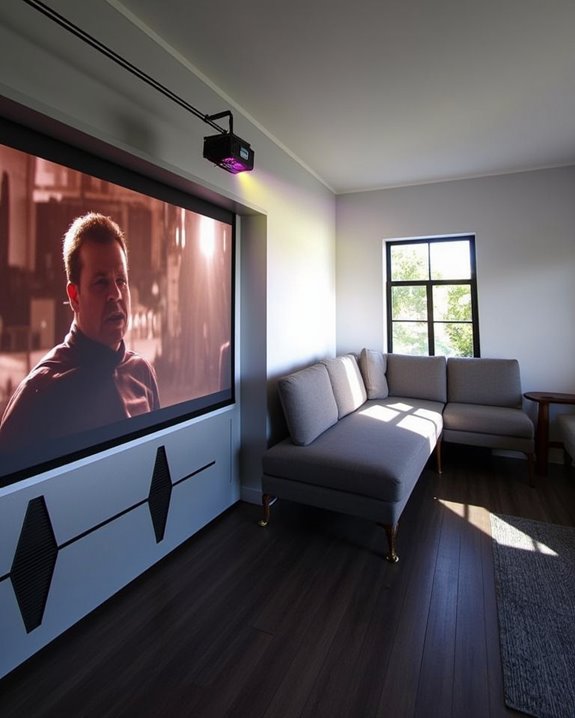
Properly setting up your ALR screen represents the critical foundation for achieving stunning laser projection results in any environment. Begin by selecting an appropriately sized screen that matches your projector’s throw distance, ensuring the room features minimal reflective surfaces and controlled lighting conditions. When implementing mounting techniques, follow manufacturer instructions carefully, using the provided brackets while ensuring perfect leveling to prevent image distortion.
Once mounted, adjust your laser projector’s placement to achieve optimal throw distance, focus, and keystone correction. Regular screen cleaning with appropriate non-abrasive materials will maintain peak performance by preventing dust accumulation that can diminish image quality. Remember to properly tension the screen material to eliminate wrinkles, and calibrate your projector’s settings specifically for your ALR screen’s gain characteristics to maximize contrast and color accuracy. For best results, consider using screens with a wide viewing angle to ensure clear images from multiple seating positions.
Different Types of ALR Screens and Their Compatibility With Laser Projectors
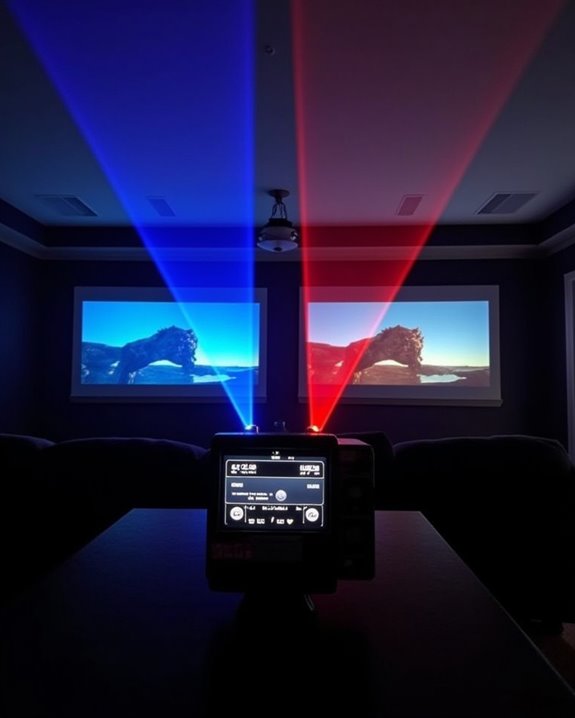
Selecting the right ALR (Ambient Light Rejecting) screen for your laser projector can dramatically improve image quality, especially in rooms where lighting control isn’t ideal. Several types are available, each offering different benefits for laser projection systems.
Fresnel screens, like those from Formovie, feature an orange peel screen texture that effectively reduces laser speckle in UST projectors. Lenticular screens from AWOL, while offering higher gain, may exhibit more noticeable speckle effects. For minimal speckle, consider Black Series 0.6 gain screens from Nothing Projector, which provide excellent material durability and consistent performance.
When selecting your screen, consider your projector’s specifications and your viewing environment. Lower gain screens typically reduce speckle, while specialized textures for UST projectors ensure ideal image quality in bright rooms.
Performance Benefits: Enhanced Image Quality in Various Lighting Conditions
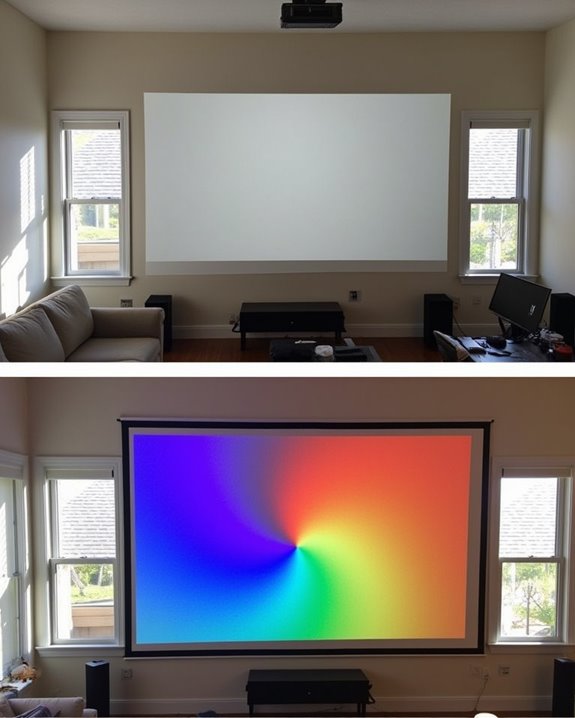
When paired with a laser projector, ALR screens deliver remarkable improvements to image quality across a wide range of lighting environments. The specialized screen material employs microscopic ridges and optical coatings that markedly reduce glare from windows and overhead lighting, achieving over 85% ambient light rejection in some models. You’ll notice dramatically improved contrast ratios with deeper blacks and more vibrant whites, even during daytime viewing.
These screens function as specular reflectors, directing the projector’s light precisely toward the audience while minimizing washout from ambient light. The result is preserved color accuracy, reduced hotspots, and enhanced overall clarity. With an ALR screen, your laser projector’s performance is optimized through maintained brightness, maximized contrast, and faithful color reproduction regardless of surrounding lighting conditions.
Key Considerations When Purchasing an ALR Screen for Your Laser Projector
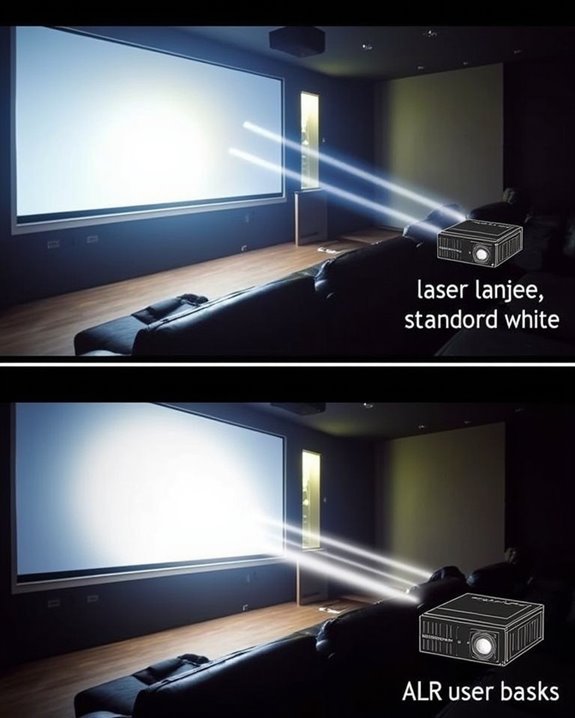
Now that you understand the performance advantages of ALR screens, you’ll want to focus on several important factors before making your purchase decision. Consider compatibility with your projector’s throw distance and resolution capabilities, ensuring your selected screen supports up to 4K content for ideal image quality. The mounting requirements and physical dimensions must match your installation space, whether you’re choosing a fixed frame or motorized format.
Budget considerations should include not just the screen’s price but also potential installation costs and long-term value. Don’t overlook durability factors like material quality and proper screen cleaning procedures, which will extend your investment’s lifespan. Finally, carefully review warranty coverage terms, as manufacturer support varies greatly between brands and can provide important protection for your high-performance viewing system.
Alternative Solutions: Comparing ALR Screens With Other Projection Surfaces

While ALR screens offer impressive performance with laser projectors, you’ll benefit from understanding how they stack up against alternative projection surfaces before making your final decision. The screen material you choose markedly impacts how your projector performs in environments with ambient light.
Standard walls lack specialized light rejection properties, resulting in washed-out images and poor color reproduction compared to ALR screens. Similarly, matte white screens reflect light indiscriminately with gains of 1.0-1.5, which brightens the image but also reflects ambient light that diminishes contrast. For ultra short throw laser projectors, specialized CLR screens offer superior ceiling light rejection compared to standard ALR screens, featuring directional reflectivity optimized for UST throw angles. Each surface represents a different balance between cost, convenience, and image quality.
Frequently Asked Questions
Can ALR Screens Damage Laser Projectors Over Time?
Picture crisp images dancing on your wall—rest assured, ALR screens won’t damage your laser projector over time. With proper screen durability and projector compatibility, you’ll enjoy long-lasting performance from your home theater setup.
How Often Should ALR Screens Be Cleaned for Optimal Performance?
You should clean your ALR screen every 3 months or when dust is visible. For ideal performance, follow proper maintenance tips like using compressed air or soft brushes and avoid harsh cleaners for regular cleaning frequency.
Do ALR Screens Work With 3D Content From Laser Projectors?
95% of ALR screens maintain 3D compatibility with laser projectors. You’ll experience enhanced depth perception and contrast when viewing 3D content. Proper screen mounting is essential to maintain ideal viewing angles for 3D effects.
Can ALR Screens Be Repaired if Damaged or Scratched?
ALR screens have limited repairability. You’ll find minor scratches may be fixable, but deep damage typically compromises screen durability. Repair options vary by manufacturer—some offer professional services, but complete restoration of original performance is rarely guaranteed.
Do ALR Screens Affect the Lifespan of Laser Projector Bulbs?
No, ALR screens don’t affect your laser projector’s lifespan. They simply manage ambient light and enhance image quality regardless of projection angle. Your projector’s longevity depends on usage patterns and environmental conditions instead.

